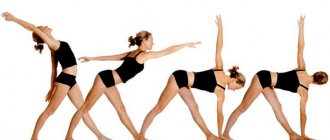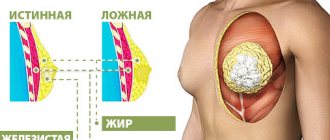Without exaggeration, Hatha Yoga can be called a universal tool for human development – physical and spiritual. This is a whole philosophy aimed at finding one’s place in the world, creating a life without violence against oneself, the world around one, developing the ability to adapt to changing circumstances, while maintaining one’s own individuality.
Hatha yoga cannot be viewed solely as fitness: by performing exercises (asanas, pranayama, mudras, shatkarmas), listening and chanting mantras, a person begins to feel unity with everything that exists - the world soul (atman). Even if you do not pursue such a lofty goal, with regular training you can feel that you are becoming calmer, more peaceful, and that there is more harmony in your relationships with other people and the world.
Of course, to achieve such results, it is important to practice hatha yoga according to the rules. And, most importantly, do this without overcoming yourself, gently, as much as you have enough energy at the current moment in time.
Hatha yoga is not fitness
There are quite a few differences between hatha yoga and regular yoga, which is often offered in fitness clubs. Let's look at a few points by which you can recognize how hatha-yoga differs from yoga.
- Warm-up in Hatha Yoga usually begins with meditation, followed by breathing exercises (pranayama). In standard fitness yoga, joint gymnastics or the “Salutations to the Sun” complex are used as a warm-up (discussed below).
- Time to complete the exercise (asana). In hatha yoga, coordination of movements and breathing (inhalation, exhalation, breath holding) is mandatory, and time is not limited - everything is individual. In regular yoga, the pace is more dynamic: each pose or exercise is given 40-70 seconds.
- A set of exercises. Usually, in one hatha yoga class, one thing is worked out - the spine is stretched, the hips are stretched, and so on. In standard yoga, an approximate balance of static and dynamic tasks is maintained.
- The purpose of the exercise. Unlike regular yoga, hatha yoga is aimed at developing the skill of relaxing your body and observing it - in any position, even the most uncomfortable one. In fitness yoga, exercises are chosen to target specific areas of the body, build muscle, and burn fat.
- Periodicity. Hatha yoga is practiced every day, most of the time in the morning, but it can also be done in the evening. Yoga for fitness is performed three to four times a week.
- Idea. People who practice hatha yoga strive for harmony - their psyche, soul and body, themselves and the world, which contributes to dissolution in the universe. Regular yoga classes are usually chosen to lose weight, tighten your figure, and look attractive.
- Philosophical aspect. Hatha yoga supports the philosophy of the ancient Indian Vedas, which is alien to publicity and competitive spirit. Many practitioners of this trend adhere to a vegetarian diet. Ordinary yoga actively goes out to the public, including in the virtual space. Instagram marathons, yoga championships are held, records are set.
Contraindications
The asana is one of the easiest to master, but has a big drawback. The weight of the body falls almost entirely on the buttocks, which makes them tired quite quickly. As you gain skill, this drawback goes away.
There are no absolute contraindications, but people with injuries or diseases of the spine, leg joints and hips, or tendon sprains should be careful. It is necessary to limit the time spent in asana if you have arthrosis or varicose veins.
Sukhasana is the most universal of all similar positions. She has fewer contraindications, her legs don’t go numb so quickly, but in terms of effectiveness she is not inferior to others. People with inactive joints and weak back muscles will not immediately be able to stay in it long enough to meditate, but this is a matter of time.
What are the benefits of hatha yoga?
Since in this direction the body is considered holistically, as a single system, hatha yoga has everything to bring it into a healthy state and keep it flexible for many years. In India, there are practitioners who have turned ninety and ninety-five, and they still easily do the splits and do the “birch”. From the point of view of bodily health, hatha yoga helps in fitness
- maintain joint mobility;
- slow down muscle degradation that occurs with age;
- relieve stress;
- reduce the load on the nervous system;
- improve the functioning of the cardiovascular system;
- normalize the functioning of digestion;
- relieve back pain, keep the spine flexible, which is a prerequisite for a youthful body;
- improve coordination;
- strengthen muscles without overload - through a combination of strength training and stretching.
When discussing the benefits and harms of hatha yoga, abuse of this philosophy is sometimes cited as one of the negative aspects. Some people use the system of maintaining health and finding harmony with the world to realize their own selfish goals, for example, involving their contemporaries in various sects. However, a thinking person will always be able to determine the line that separates philosophy from fanaticism.
The benefits of yoga for women
Much of what was said above “for men” also applies to women, but with some reservations related to physiology. As happens in many purely male areas, the presence of women there was opposed, but according to the rules of yoga, they had no right to prohibit it: a person cannot be prohibited from developing. And today we see the following picture: 2/3 of those training in the gym are women. For this reason, some mistakenly classify the practice of yoga as a type of physical activity for the weaker sex. Although yoga is first and foremost a discipline, in order to follow it you need will - there is no division into male and female.
There are many reasons why there are more women in yoga: ladies care more about the beauty and health of their bodies; are interested in something unusual, lying in the sphere of esotericism; open to fashion trends and new products; are more sensitive, vulnerable and, on a whim, find ways to unload from everyday worries. But the conversation in the article is now about something else.
The yogic postulate that incarnation in a female body is only one of the stages in the evolution of human consciousness should not be biased. This role is wonderful and honorable, it has a lot of interesting moments, like any transitional period. Let's start with the fact that a woman by nature already has everything she needs for favorable development. First of all, the intangible reserve is the energy with which you are constantly filled. She is energetic and can always inspire. In particular, for a man, a woman is initially a source of energy, although it can also serve as one of the reasons for its loss.
In the course of life, due to improper upbringing, ignorance, environmental influences, fashion and personal karma, a woman squanders her “dowry” and, in the end, may lose it.
If the benefit of yoga for men is that they gain the strength to make themselves (after all, you still need to become a man!), then yoga will only help a woman who has not yet lost herself to correct controversial issues that do not suit her. Become an even better version of yourself than you were before. According to the Creator's idea, a woman is initially beautiful.
The average representative of the fair sex, if she had been born in a more favorable environment and developed harmoniously, would not have had to do anything. And there are such women, they are aware of their advantages, wise and happy in their incarnation, but they can also be found in yoga halls. They are searching and solving some of their problems, be it health, family or work. The life of a modern woman today is no different from the life of men in terms of stress, responsibility and desire for self-realization.
What are the benefits of yoga for the female body?
In physical terms, the benefits of yoga for the female body primarily lie in the fact that it helps to improve the functioning of the endocrine system. Here the fair sex is more complex than men. There is even such an expression: “A woman is a hostage to her hormones.” Problems with one can damage many others. The normalization of processes occurring in the lower chakras is facilitated by asanas for opening the pelvis, abdominal manipulations and working with locks (bandhas) and mudras.
Internal organs that influence the endocrine system - the pituitary gland, thyroid gland, adrenal glands, ovaries - must work harmoniously and are located in both the lower and upper centers. It is important that the class includes yoga practices that help the synchronous work of all chakras.
Along with hormones, the nervous system must also be stabilized. The female mind is much more mobile than the male. Men tend to think about one situation comprehensively, while women have several versions of the same thing crowded into their heads, plus additional and completely unrelated ones. Such an “orchestra” in the head causes a lot of trouble. The benefit of yoga for a woman is that it helps him “play smoothly.” Relaxation practices (yoga nidra, Shavasana, meditation), calming breathing techniques (Apanasati, Nadi Shodhana) have a beneficial effect on the psyche. They help get rid of doubts, find true needs and avoid unnecessary influence, which, due to mental turbulence, is also a big problem for women.
Ladies by nature do not differ in the strength of their arms and abs, but these areas in the fair sex are weaker than required. There is a balance to be struck here. The benefits of power yoga poses for women are obvious, but you should not lean on them during periods of ridding the body of toxins. It is also important to take into account the mental effect: power poses cause imbalance and aggression. However, systematic and timely strength training teaches you to control emotions and process them in a more positive direction. For example, when you get angry, don’t start screaming, but do push-ups (10 times should be possible) or start doing something, like cleaning the house.
We are talking about the ability to transform those emotions that can harm their owner and the people around her. This is already working with the upper centers. Asanas to open the chest help to express feelings without offending anyone. In general, the emotional nature of women is spontaneous and does not lend itself well to volitional efforts. Suppression leads to psychosomatic illnesses. The benefit of yoga for a woman is that it helps to better study her manifestations and learn not to restrain overwhelming feelings, but to adequately express them.
A balanced person and looks more attractive. Beauty is the most important aspect for a woman. Yoga adds to the external attractiveness (normalization of weight, healing and cleansing of the skin, fit figure, rejuvenation) internal (harmony, optimism, charisma, confidence in one’s feminine power). All this without grueling training. Moreover, yoga classes begin to be enjoyable over time. The ability to enjoy the process is largely a feminine characteristic.
In spiritual terms, a woman’s personal growth, if necessary, will definitely happen, and with it the quality of life will change. The task of a woman, like a man, is service. You just need to make a choice to whom or what to dedicate it to. If the female incarnation is just a transitional stage, then it is more expedient to serve the one who is higher at the stage of development - a man, choosing among them a worthy one, and through him - the Absolute. However, the time in which we happen to live on Earth provides a variety of forms for fulfilling our purpose. The benefit of practicing yoga is that it helps you understand it and begin to implement your plans into reality.
What are the benefits of yoga for the body?
Yoga as a means of healing the body is gaining more and more fans. It happens that people exercise - their condition improves, they stop walking and return when it becomes bad again. If you want to regain health on a long-term basis, regular practice should be made a way of life, then the health benefits of yoga will not be temporary, but will accumulate and become significant.
If you need to cope with specific diseases and do not want to go deeper into the methodology, go ahead. Yoga successfully serves applied purposes through a separate direction - yoga therapy. For example, abdominal manipulation solves many problems of the gastrointestinal tract without drugs. Today, young and active people often suffer from arthritis. Yoga classes can keep your joints in good condition, and it will not come to the intervention of doctors.
If you often get colds, then cleansing techniques, accessible breathing exercises and asanas for the chest area will help you become more resistant to viruses. Systematic performance of asanas, pranayamas and cleansing techniques, even in homeopathic doses, will help relieve pain in the back and other parts of the spine, making it flexible. Currently, the most progressive representatives of medicine in our country not only actively use yogic techniques to normalize their own health, but also recommend them to their patients.
What are the benefits of yoga for the spirit?
Stress, anxiety and depression will go away. They will be replaced by calmness and productivity. Blood pressure and heart rate will be balanced. The muscles will gain tone, the body will gain relief. Appetite will decrease, weight will normalize, and immunity will increase. Your posture will improve, and your entire appearance will become fresh and invigorated. Good general well-being is noted by all those who come to a yoga class for the first time. Having become calmer, many begin to hear their intuition. Automatic reactions go away, and instead, awareness of thoughts and actions arises. Life takes on bright colors.
People return to long-abandoned favorite activities, becoming happier, or begin to learn new things, actively showing their position in life and achieving goals. Fear gives way to a deep understanding of one's true tasks, and a person gradually becomes the master of his destiny. This is a healthy lifestyle, which many strive for using targeted measures. Yoga works in a complex way.
Perhaps the benefit of yoga is that the body returns to normal. You might say it sounds modest. However, being a healthy and adequate person in the present time is an achievement. Has everyone long ago forgotten what the norm is?! Most, for various reasons, deviated from it long ago and acquired many problems. Despite the efforts of the state to cultivate a healthy lifestyle among the population, teachings brought in from outside are so far more effective. Practice. Even if yoga is not a panacea, it can put a lot of things in a person’s life into place.
Do yoga with the OUM.RU club
Who can do hatha yoga?
This practice is available to all people, without exception. In India, hatha yoga begins to be practiced from childhood, and then it is practiced throughout life.
However, in some situations it is better to postpone training. Thus, dynamic asanas should not be performed during an acute infectious disease. Inverted poses are not recommended for women in the first two days of the menstrual cycle. It is necessary to practice with caution after injury and surgical interventions. During pregnancy, it is important to choose certain exercises, and it is better to do them under the guidance of an experienced instructor.
What exercises are there in Hatha Yoga?
Hatha yoga practices are divided into several groups.
- Asanas are certain poses, static or dynamic. Among the most famous are chaturanga dandasana, which resembles a classic push-up; chair, warrior, boat, head down or up dog poses and others. All of them can be divided into exercises in a lying, sitting and standing position; tilts and deflections, twisting, inversions and balance. Some are aimed at increasing body endurance and increasing muscle strength, others at muscle stretching.
- Pranayama - breathing exercises during which you need to inhale, exhale, and hold your breath. At the same time, it is important to maintain maximum concentration on the process. Pranayama allows you to learn how to keep the energy in your body under control and direct it in a certain direction.
- Meditations can be performed during the class, after the exercises, and at the end of the workout, shavasana is performed. Practitioners take the corpse pose: they lie on the floor, closing their eyes, placing their arms and legs freely, moving them away from the body. For maximum relaxation, it is recommended to first stretch your feet and the top of your head in different directions, and then suddenly relax. To distract yourself from thoughts, you can focus your attention on the tip of your nose or on your breath, on the sound of a mantra or other object. This allows you to accumulate the energy received during practice.
- Mudras are special poses of the fingers. They are performed both separately and in combination with other exercises.
Hatha yoga as a philosophical doctrine also includes other practices. These include shatkarma (purification) - fasting, rinsing the nose, and so on. Acupuncture massage is used: impact on biological active points of the body during exercise.
In total, there are four steps in hatha yoga - the yamas (five moral principles, which include non-violence (ahimsa), asceticism (brahmacharya), truthfulness (satya) and others); niyamas - five rules for internal self-development and spiritual development, asanas - static poses, pranayama - breathing techniques.
Those who not only do exercises and meditation, but adhere to the philosophy of hatha yoga in everyday life, eat in a certain way. The menu contains no animal protein, a lot of dairy products, vegetable oils, nuts, and plant foods. The most important thing is not to overdo it. After all, one of the basic principles of hatha yoga is the absence of violence, including against oneself.
How yoga affects health: scientific research results
Good health is why most people come to yoga. Be it physical, emotional, mental or soul health. Yoga can solve almost all health problems. But even if the illness is beyond her power, she is able to change our attitude towards it and in this way bring enormous relief.
Yoga, unlike Western medicine, has a completely different approach to the question of what constitutes health.
In his book “Yoga - the path to health” B.K.S. Iyengar writes:
“ Being healthy means not just not getting sick. Health implies perfect balance and harmony between joints, tissues, muscles, cells, nerves, glands and all body systems. Health is the perfect balance of body and mind, mind and soul.”
Health for a yoga practitioner means much more than just relief from headaches or knee pain. It is rather about optimizing the functions of the entire body , from muscles to digestion, circulation and immunity. This is emotional balance, spiritual stability, optimism and even joy.
Yoga teaches us to see that everything in us is connected to everything else. Timothy McCall, author of the book “Yoga. Healing asanas” writes:
“From a therapeutic point of view, when you try to improve the functioning of the whole body, you improve the functioning of some organ or system. Yoga is a systematic technique for improving the body to understand the mind and liberate the spirit.”
The range of effective effects of yoga on human health is very wide. You can cite more than 30 therapeutic effects of yoga, which are confirmed by many years of research conducted in Europe, America, Australia, and India.
The relationship between the body and the human psyche has been known for a long time. Attempts to diagnose human character traits based on certain external signs, such as physiognomy, chirology, and phrenology, also go back to ancient times. However, in modern psychology this problem was raised quite recently. Only in the middle of the twentieth century, W. Reich, W. James, A. Lowen, D. Ebert and other scientists revealed that the human psyche is projected onto his physical body in the form of constitutional features, muscle tension and joint-muscular contractures (limited mobility in the joints and a decrease in activation of the mechanism of contraction of muscle fibers) affecting its physical development.
The opposite is also true: by influencing the physical body in a certain way, you can change the psychological and physiological state of a person . Also, in the works of followers of the schools of experimental psychology V. Wundt, A. Binet, I. Pavlov, I. Sechenov and others, the existence of a connection between individual mental processes, primarily sensory-emotional and somatic processes, was shown.
The works of D. Ebert, V. Reich, A. Safronov, R. Minvaleev and other scientists revealed the positive influence of the elements of hatha yoga on the main physiological systems: nervous, respiratory, cardiovascular, genitourinary, endocrine, digestive and on the musculoskeletal system. motor apparatus.
Studies of the physiological aspects of hatha yoga by D. Ebert (1986) showed that one of the mechanisms of influence on the activity of the physiological systems of the body is a change in hydrostatic pressure in its various cavities when performing hatha yoga exercises.
In addition to the humoral mechanism, in the works of G. Zakharyin and G. Ged (1883), a reflex mechanism was also identified, the essence of which is a compensatory increase in blood circulation after stretching or compression of areas of the physical body, as well as cutaneous-visceral and motor-visceral reflexes, allowing direct influence the functions of various organs. Their existence is based on the fact that the sensory nerves of internal organs, skin areas (Zakharyin-Ged zones) and muscles intersect at the level of spinal cord segments. As a result, tension of certain muscles and stimulation of certain areas of the skin affect internal organs (A. Safronov, 2005).
In addition, we can also distinguish: stress (L. Garkavi), psychosomatic (V. Reich, W. James, A. Lowen), hormonal (R. Minvaleev) and energetic (D. Ebert, A. Safronov) mechanisms of influence of hatha elements yoga on the human body.
Also, it is necessary to emphasize the mechanism of the mechanical influence of the elements of hatha yoga on the human body due to specific deformations of the body shape. Due to this, there is a mechanical effect not only on the muscular system, but also on internal organs, as well as on various parts of the autonomic nervous system, which takes part in regulating the activity of all internal organs and glands, as well as metabolism.
Based on the above studies, the results of hatha yoga classes become obvious. Thanks to which the general recreation of the body is achieved, weight is regulated, the psycho-emotional state and sleep are normalized, performance increases, the immune functions of the body are activated, the innervation and blood supply of internal organs is improved, the physiological adaptive reaction of the body develops, flexibility and mobility of the musculoskeletal system occurs, internal muscles are trained and spinal correction.
The social significance of the practice of Hatha yoga is based on the activation of a person’s energy potential, the prevention of psychological stress and the education of a healthy harmonious personality.
Yoga provides tools to help overcome one of the major modern factors in poor health and well-being: an imbalance in the system designed to cope with stress.
However, it is worth noting one important point.
Patanjali's classic work, the Yoga Sutras, states that yoga practice should be long, continuous and attentive. Yoga is a powerful medicine, but it acts slowly. Therefore, do not expect quick results (although some may feel better after the first lesson). At the same time, the positive results from such activities will be much more lasting.
In this case, yoga can be compared to learning to play a musical instrument; The harder and more often you practice, the better results you achieve and the more benefits you get from your sessions.
Source: scientific article “Hatha yoga as an effective means of influencing health”
How to dress for hatha yoga?
When practicing hatha yoga, everything matters: the place where the training is carried out, the environment, the people with whom you practice, and, of course, clothing. The equipment should be as comfortable as possible so as not to restrict movement and allow your body to move and breathe freely.
- In India, it is customary to dress in a long-sleeved, semi-fitting shirt and loose cotton trousers that taper at the ankles. In Russia, you can also follow this tradition, but not necessarily - more universal things are quite suitable. Experienced hatha yoga instructors recommend focusing on several basic criteria when purchasing clothes for classes.
- The first is high-quality knitted fabrics. An elastic top, T-shirt or T-shirt, leggings or shorts made of cotton or special synthetic material for sportswear are suitable. It is important that the material allows the body to breathe and does not rub the skin.
- The second is the style. It is better to choose tight or semi-fitting models without sleeves or with short sleeves. This way, clothing will not interfere with movements and will allow you to clearly see the location of your arms, legs, and muscle tension. T-shirts and pants that are too wide can get tangled and slip down, thereby interfering with your activities and distracting you. If you intend to exercise indoors, you can wear light clothes, but for training outside in cool weather, you need warmer things - for example, a sweatshirt.
- Third - cut. It is worth ensuring that while performing asanas and pranayamas, pants or shorts always cover the lower back: this way you won’t have to worry about your underwear being visible. Accordingly, you can pay more attention to practice.
- Fourth - shade. To fully concentrate on the process, experts recommend wearing a uniform in soft, non-garish colors. white and all pastel shades are a completely suitable solution. Black is good too.
- An important component of equipment for practicing hatha yoga is a special mat. It should be made of elastic elastic material and not slip. This will make it easier to hold position in static poses, such as downward-facing dog or warrior.
How to master the pose
The body position in Sukhasana is ideal for prolonged practice of Pranayama, contemplation or meditation. Commonly known names for asanas are “comfortable pose” or “Turkish pose.” Every person is familiar with it, even if he is far from yoga. But even such a simple asana requires compliance with the rules.
Sukhasana pose, technique: it is most convenient to sit cross-legged on a hard floor (but you can place a blanket or pillow under the buttocks so that the stand is no higher than 10-15 cm);
- the legs bent at the knees are intertwined so that the right foot is located under the left leg, and the left foot is under the right;
- the feet lie with their ribs on the floor (but you cannot place emphasis on them), the shins are crossed in the middle, the knees are at the same height from the floor;
- the spine is completely straight, palms can be placed on the knees or thighs (but do not put pressure on the legs) or perform mudras;
- move the shoulder blades - this will open the chest;
- periodically (every 1-2 minutes) the legs can be crossed in a different order.
Before you begin meditation or contemplation, you need to master the asana to the end. During such serious practices one cannot be distracted, and the first steps in mastering any position require close attention in all parts of the body. The spine should always be straight, shoulders straight. If muscle tension, back fatigue or joint pain occurs, you should stop immediately.
The muscles of the body in the pose are completely relaxed, except for those that straighten the spine. Ideally, the knees should not rise higher than the hip joints (in the first few steps, a soft support under the buttocks will help). Otherwise, excessive bending of the hips will provoke additional tension in the muscles of the back and pelvis.
Where to begin?
It is recommended to start practicing with an instructor. Precisely because in hatha yoga it is important to learn to observe different aspects of the work of your body and psyche. You need to take the right positions to get the effect. An experienced trainer will tell you how to do asanas and notice from the outside what is wrong and gently correct it.
But this is not the only argument in favor of training with an instructor. An experienced practitioner will be able to introduce you to the basics of the philosophy of hatha yoga, accompanying the classes with clear explanations. This will allow you to fully experience the special flavor and feel the spirit of Indian philosophy.
It is optimal to find a good yoga center or instructor at a fitness center. But if this is not possible, you can practice online: many trainers today conduct classes in a distance format. There are many videos on the Internet demonstrating the simplest and more complex asanas and pranayamas.
First steps in hatha yoga
To perform asana or pranayama correctly, it is important to follow the algorithm very precisely. Let's first look at a few asanas that are suitable for beginners.
- Standing traction. Starting position – standing, feet as close to each other as possible. The back and neck are straight. The abdomen is slightly retracted, the muscles of the perineum are tense. Inhale by raising both arms up and placing your palms together. Stretch as hard as possible to stretch your spine. Then exhale - lower your folded hands down so that your palms are in front of your chest (as in prayer). Repeat the exercise, monitoring your breathing.
- Bend forward. From a standing position, extend your arms up, and then, keeping them straight, lean forward until your palms touch the floor. At the same time, it is important to strive to keep your back straight and stretch your pelvic bones upward. Inhale when your arms are raised, exhale when your arms and head are down.
- Warrior pose. The legs are spread as wide as possible so that they form a triangle. The right foot is turned parallel to the body, turning the body in the same direction. The left one is placed at an angle of 45 degrees. Arms are extended to the sides along the floor. Freeze in this position for a few seconds, tensing the muscles of the legs and arms, stretching the palms to the sides. Repeat, turning the body in the other direction.
- Downward facing dog. Standing straight with your feet together, raise your arms above your head, then bend down so that your palms touch your feet. With your hands on the floor, take a step or jump with both feet a meter and a half. The body forms a triangle: the feet tend to fully touch the surface of the floor, the palms rest firmly on it (fingers are spread as far apart as possible), the back is extended, the shoulder blades are straightened, the buttocks are stretched upward, the neck is relaxed. This exercise helps relieve tension from the spine and neck.
- Upward facing dog. Performed from a downward facing dog. From the triangular pose, you need to roll on your arms and legs so that your arms are positioned at a ninety-degree angle relative to the floor. At the same time, the head is pulled up, the neck is straightened, and the legs are straight. The spine in the lumbar region is curved.
And now - one example of pranayama: kapalabhati. Starting position – sitting with legs crossed in front of you (free pose). The left palm rests on the left knee. The fingers of the right are connected in cherry mudra: the index and thumb touch each other with their tips, forming a ring, the remaining fingers are free. The palm is placed near the face so that the thumb and forefinger pinch the nose: the first on the left side, the second on the right. Inhale and at the same time raise your thumb. Then they close the right nostril with it, and move the index finger away from the left - exhale. This is repeated any number of times.
Flexibility
Yoga classes do not require stretching - this is not gymnastics. Reaching your toes with your hands and staying in this position for several minutes is not necessary. The most important thing in yoga is to be aware and feel your body and breath in every moment of the exercise. Yoga gurus note that it is internal concentration and the absence of any thoughts that allows you to understand which poses will help you immerse yourself best. It is important to remember: yoga is primarily a state of mind, body and way of life.











